JMSDF’s Expanding Roles
While having an impressive fleet of 54 combatant ships and 22 submarines, Japan’s Maritime Self-Defense Force (JMSDF) is not reckoned as a “blue water navy” due to its limited expeditionary capacity.
Starting out as small patrol navy with retired US destroyers, JMSDF steadily grew both in size and capability during the Cold War period as postwar Japan achieved its economic miracle.
But, despite being the world’s second largest economy, Japan maintained its course of pacifism, keeping their naval prowess strictly to a regional level.
It was only during the 1990s when JMSDF began to expand its scope of activities, starting with the Persian Gulf minesweeping operation. After this historic move, JMSDF gradually took on more global responsibilities, including refueling operations to support the US led coalition in its War on Terror.
This responsibility was only exacerbated by China’s rapid military expansion, requiring Japan to step up further in maintaining regional order. In light of an emerging China and relative US decline, Japan’s naval asset was just too good to be contained in its surrounding waters.
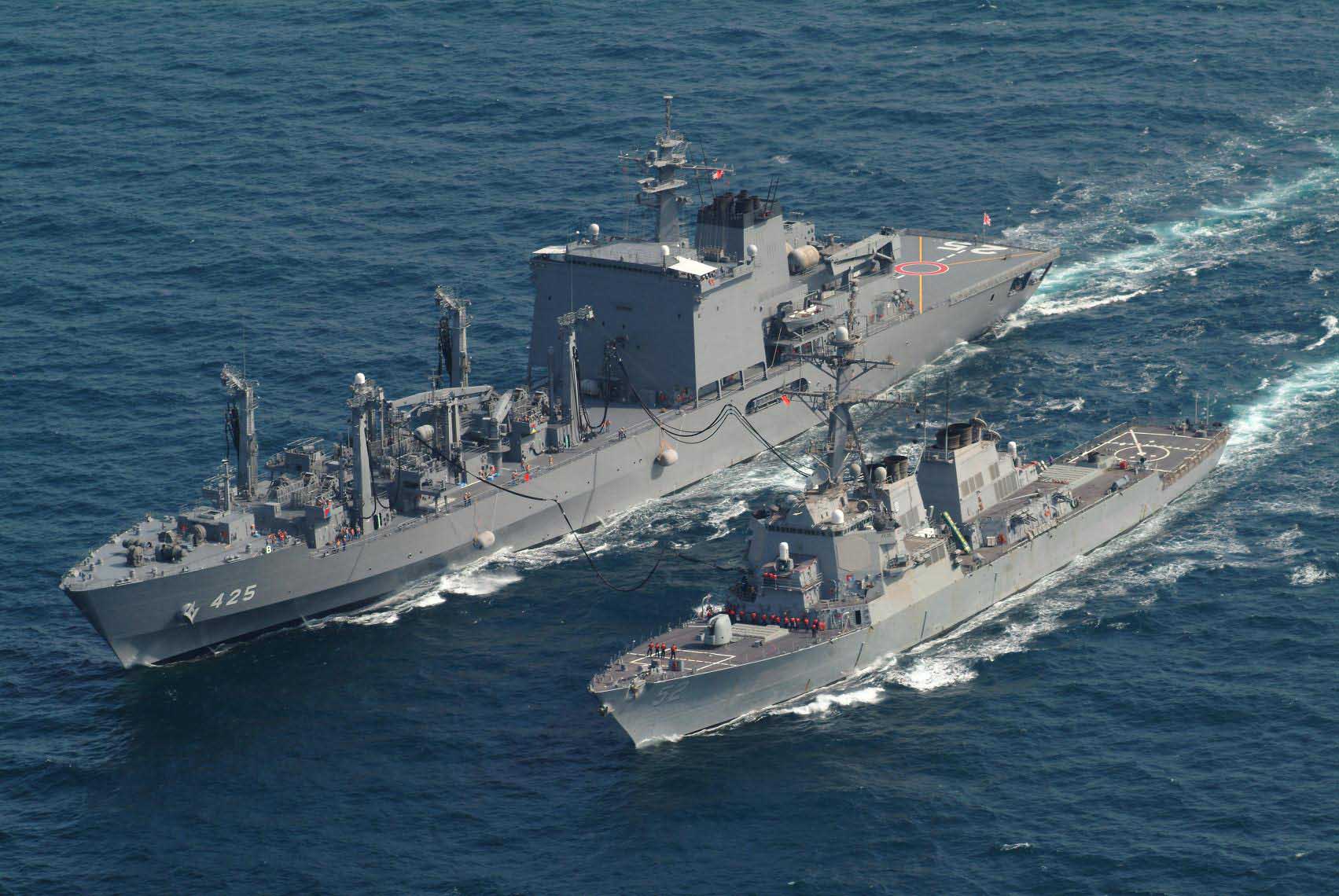 Refueling foreign navies as well (photo: JMSDF)
Refueling foreign navies as well (photo: JMSDF)
As such, JMSDF made its way to a formidable green water navy with some expeditionary capacity, breaking out of its conventional boundaries. JMSDF now frequently ventures beyond its original waters, sailing through the South China Sea and showing its presence in the Indian Ocean.
Needless to say, any long-term voyage would require the fleet to either make regular port calls or accompany enough replenishment ships. Japan was no exception, in which resulted in JMSDF to build new, larger replenishment oilers throughout the early 2000s.
These ships were intended not only for JMSDF’s vessels, but also for replenishing foreign navies, including the US and Australian Navy. In other words, the replenishment oilers were to serve as a vital tool in highlighting Japan’s contribution towards global security.
Building Four New Ships
Currently, JMSDF has two types of replenishment oilers – the Towada-class and the Mashu-class, each with three and two ships.
- General Overview
| Towada-class | Mashu-class | |
| Displacement | 8,100t | 13,500t |
| Length | 167m (548ft) | 221m (725) |
| Beam | 22m (72ft) | 27m (88.5) |
| Crew | 140 people | 145 people |
| Speed | 22 knots |
24 knots |
| Range | 19,500km (12,000 miles) |
17,600km (10,900 miles) |
| Capacity | Fuel: 7,500t Food: 500kg |
Fuel: 10,000t Food: 750kg |
| Price | 300 million USD | 400 million USD |
Introduced in 1987, the Towada-class saw a significant upgrade from its predecessor, but was not enough to support an entire fleet (eight destroyers).
Moreover, JMSDF did not have overseas deployment in mind when they designed the replenishment ship, raising an issue shortly afterwards.
This eventually led to the Mashu-class, which saw a 60% increase from the Towada-class, making it the largest JMSDF vessel until the Hyuga-class helicopters carriers arrived.
As larger ships meant more replenishment capacity, the Mashu-class can carry 1.5 times more fuel, thereby accommodating nine standard destroyers in a single supply run.
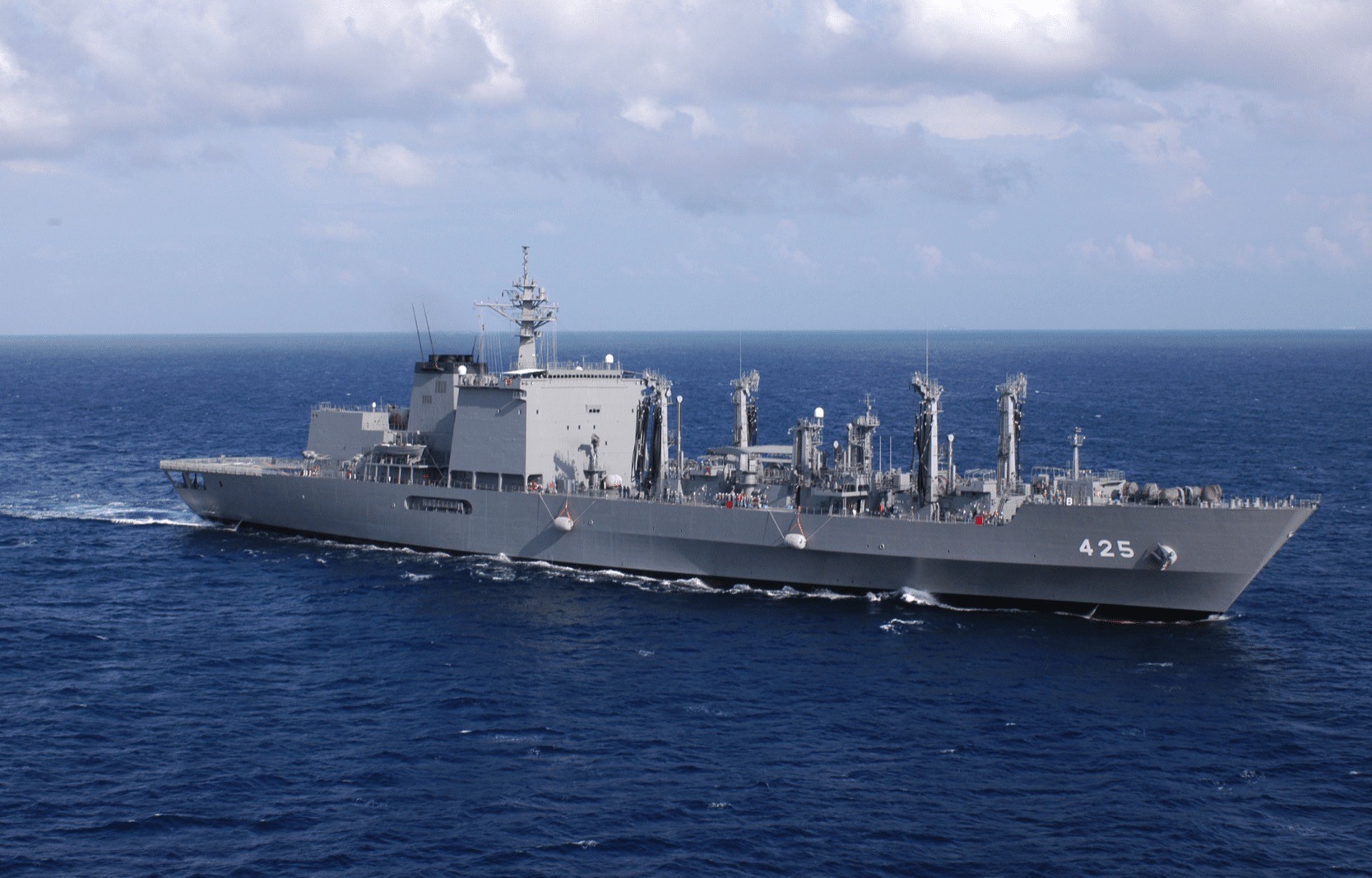 The Mashu-class (photo: JMSDF)
The Mashu-class (photo: JMSDF)
The Mashu-class also enjoys new equipment, such as forklifts, belt conveyors, and elevators, all of which were installed to improve labor efficiency.
Another conspicuous feature is the medical bay that can treat 46 patients at once, enabling the ship to function as a small hospital ship.
The large Mashu-class was more than capable of serving overseas, but the small number and the aging Towada-class has convinced JMSDF to further enhance its replenishment capability.
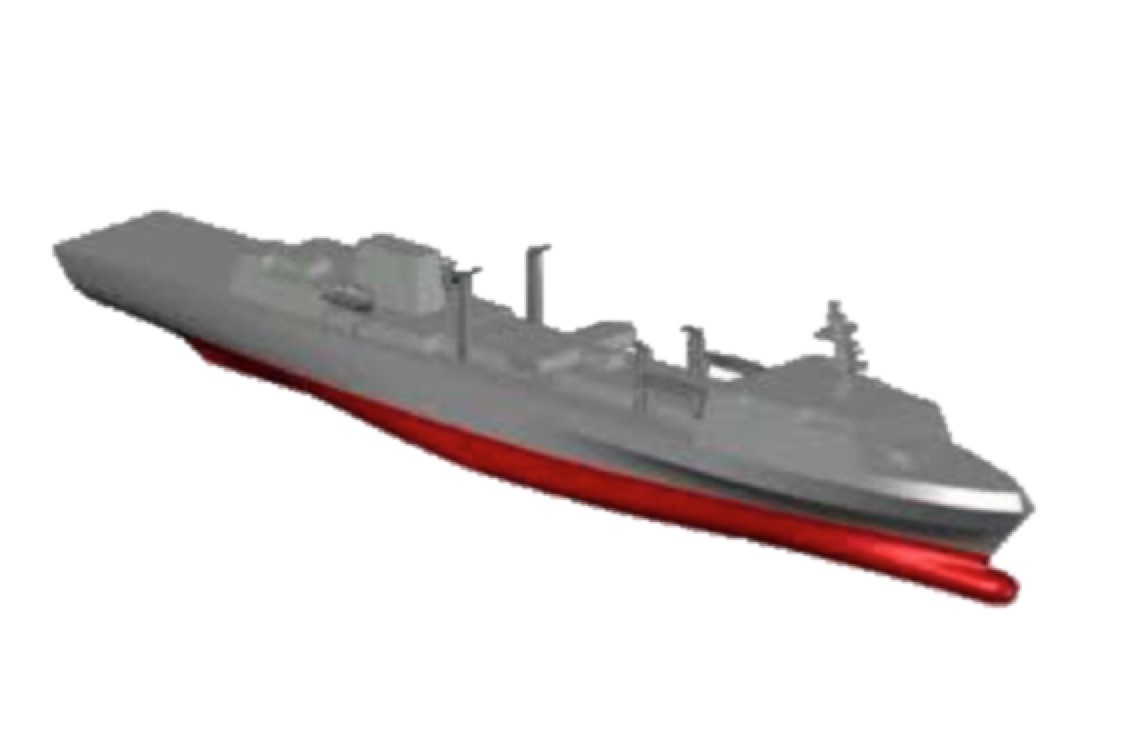 Image of the 14,500-class replenishment oiler
Image of the 14,500-class replenishment oiler
With the operational range extending to the far reaches of the Gulf of Aden, a plan to build four 14,500-ton class replenishment ships are currently underway.
These will replace the Towada-class and bring the total number of replenishment oilers to six ships, but they are also to be installed with a side-ramp for carrying vehicles, indicating some transport capability.
Such plans certainly corresponds with the recent move to beef up island defense, as well as reinforcing the auxiliary fleet while Japan refits the Izumo-class carriers with F-35B fighters, gaining some power projection capability for the first time in postwar history.
This does not mean JMSDF aims to become a blue water navy, but the new replenishment oilers will be crucial for empowering the world’s most powerful green water navy.

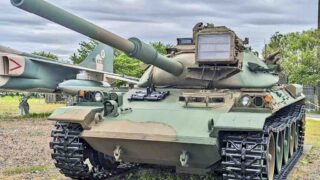
-320x180.jpg)

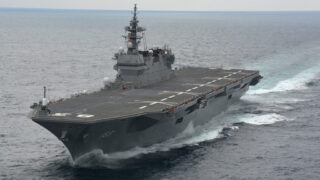
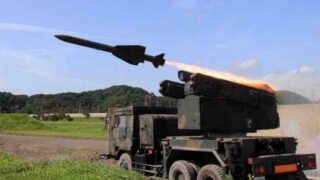
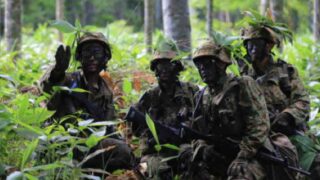

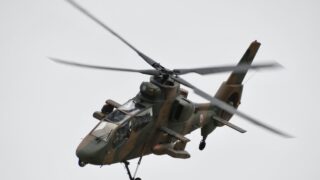
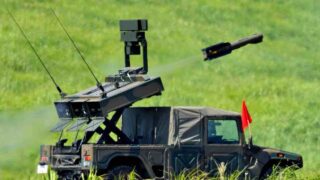
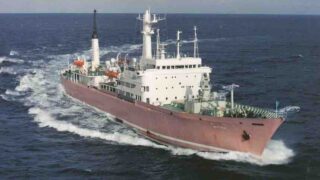
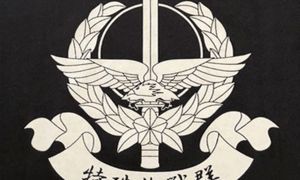
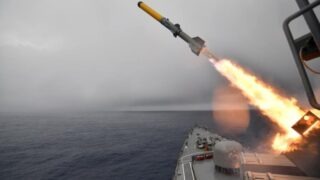

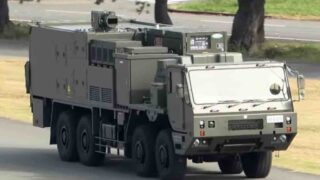
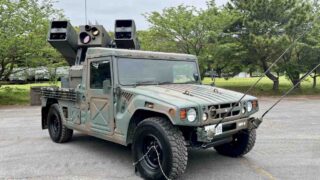

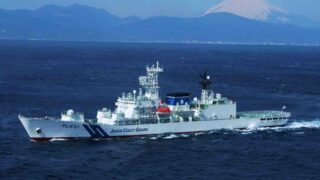
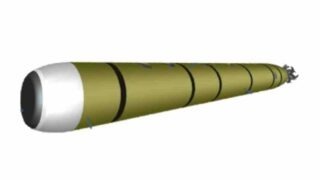
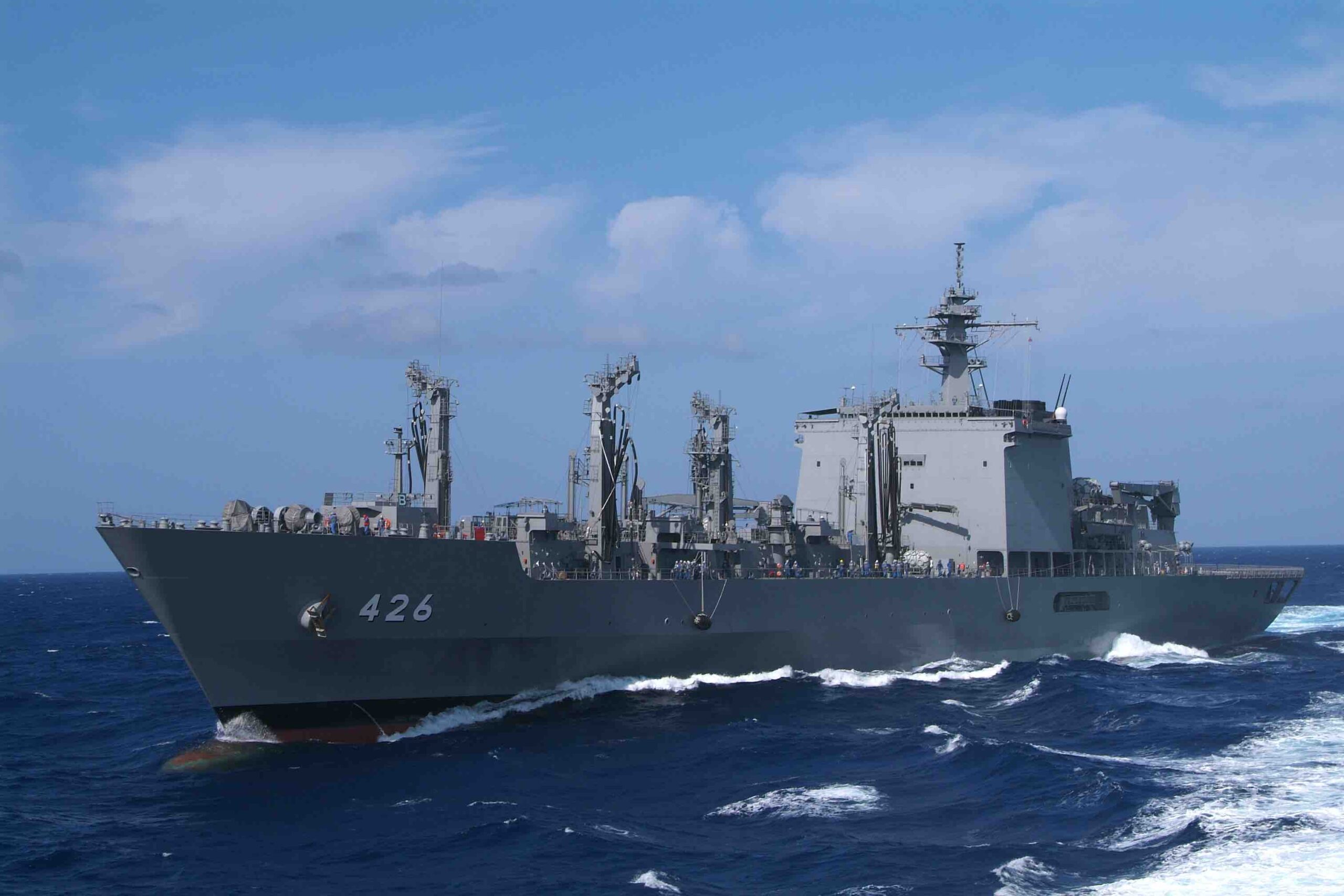
Comments